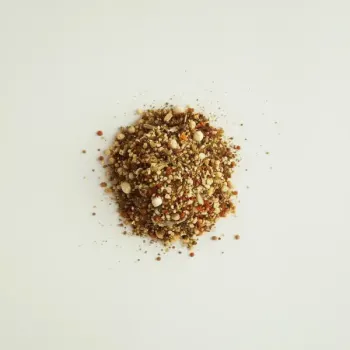
Italian Seasoning substitutes include Greek Seasoning, Dried Oregano, individual herbs like basil and thyme, Herbes de Provence, and Fines Herbes. These alternatives cater to various dishes, from meat and poultry to gluten-free and vegetarian recipes, offering versatility and maintaining Italian flavors.
Greek Seasoning, while distinct, shares many herbs with Italian Seasoning and can be used as a 1:1 substitute. It may include additional spices like garlic powder and onion powder, enhancing the flavor of meats. Cavender's is a popular brand for Greek Seasoning.
Dried Oregano is a potent herb commonly used in Italian Seasoning. Alone, it can impart a strong Mediterranean flavor to meats. Use less than the amount of Italian Seasoning called for, as its flavor is concentrated. A ratio of 1:2 (oregano to Italian Seasoning) is a good starting point.
Using individual dried herbs like basil, oregano, and thyme, ensure control over the blend while keeping the recipe gluten-free. Combine equal parts, or adjust to taste. Fresh herbs may be used at a 3:1 ratio to dried herbs. The resulting blend will be free from potential gluten-containing additives.
Herbes de Provence can be used as a gluten-free substitute in a 1:1 ratio, as it is typically free from additives that contain gluten. It's suitable for those looking for a similar herbaceous flavor in their dishes. McCormick and Spice Islands offer gluten-free versions.
A mix of dried basil and thyme can replace Italian Seasoning, as they are key components. Use equal parts of each to create a balanced blend. The ratio to Italian Seasoning should be 1:1. Expect a slightly different flavor profile, with basil being more prominent.
Fines Herbes is a delicate blend of French herbs, including parsley, chives, tarragon, and chervil. It works as a milder substitute for Italian Seasoning in a 1:1 ratio. It's best added towards the end of cooking to preserve its flavor. McCormick is one of the brands offering this blend.
Herbes de Provence is a French herb blend similar to Italian Seasoning and can be used in a 1:1 ratio. It works well due to its comparable flavor profile, although it may contain lavender. Cooking tips include using it in similar contexts as Italian Seasoning, such as sauces and dressings. Popular brands include McCormick and Spice Islands.
Using individual herbs like basil, oregano, and thyme, which are commonly found in Italian Seasoning, allows for customization of the blend. Combine equal parts of each to mimic the flavor or adjust to taste. Fresh herbs may be used in a 3:1 ratio to dried Italian Seasoning. Keep in mind that the flavor will be fresher and possibly stronger.

Your ultimate Recipe Box, Meal Planner, and Cooking Class all in one
| Recipe Category | Substitutes |
|---|---|
| Meat and Poultry | Greek Seasoning, Dried Oregano |
| Gluten-Free Recipes | Individual Herbs, Herbes de Provence |
| Vegetarian and Vegan Recipes | Dried Basil and Thyme, Fines Herbes |
| Italian and Mediterranean Dishes | Herbes de Provence, Individual Herbs |
While Italian Seasoning is a staple in many kitchens, these substitutes can help recreate its signature flavor or allow for culinary exploration with different herb combinations. Each substitute offers unique nuances, making them versatile for a range of dishes and dietary preferences.